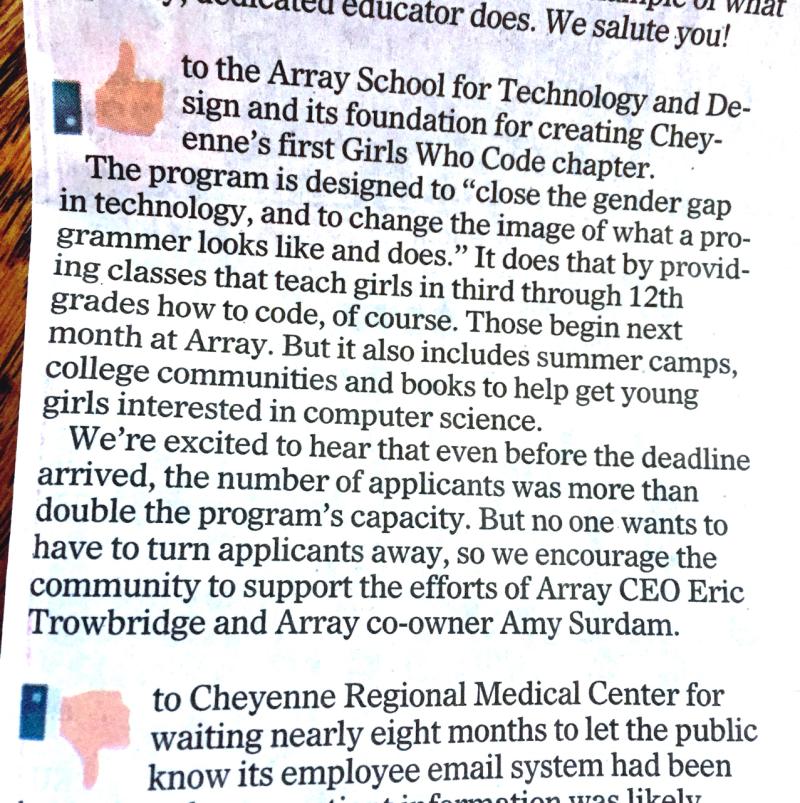For many people throughout Wyoming, a visit to the doctor’s office may involve an extensive expedition. Patients sometimes need to travel long distances, on highways that can be nearly impassable, if not closed, during winter.
Confronted with these and other limitations, people living in rural and underserved communities seeking medical care sometimes forego seeking care altogether.
The owners of Stitches Acute Care Center, Amy and Dr. Dan Surdam, have partnered with the University of Wyoming School of Pharmacy to address the challenges facing not only patients, but also health care providers in remote, underserved locations around Wyoming.
Amy, a graduate of the UW Fay W. Whitney School of Nursing, earned her Bachelor of Science in Nursing in 1996 and a Master of Science in Nursing in 2004, and is a family nurse practitioner. Dan is an emergency room board-certified physician.
“Telemedicine (connecting a health care provider with a patient using audio/visual technology), as a way to reach people in remote and underserved areas, has been in existence for decades,” Amy says. “However, utilization remains low. Even with the advancement of technology, patients in rural areas tend to either look to traditional brick-and-mortar clinics to receive care, even if it means driving for hours or foregoing care altogether.”
Complicating the availability and use of telemedicine in rural areas is the extreme provider shortage, coupled with an aging population, making it challenging for already overburdened providers in rural or near rural areas to offer telemedicine as an additional service.
With grant funding provided by the U.S. Department of Agriculture, the Surdams undertook creating InstaClinics. An InstaClinic provides a telemedicine portal as a means to interact with a physician, nurse practitioner or a physician assistant from within an environment such as a local pharmacy. Stitches was awarded $62,557 to help establish 20 additional InstaClinics in rural areas throughout Wyoming.
Adding to a provider shortage, Wyoming has some of the highest cost of health insurance in the nation, with some of the poorest outcomes. In 2017, 11.5 percent of Wyoming’s citizens did not have health insurance. Compared to the rest of the nation, Wyoming ranks seventh for those uninsured.
“When one is struggling to have basic needs covered, it is no wonder preventive health care is not a priority. However, in Wyoming, our lack of prevention is unacceptable,” Dr. Surdam says. “Wyoming ranks 50th in the nation for adults without appropriate cancer screening; 50th for young children without recommended vaccinations; and 49th for adults without a routine doctor visit in the prior two years. Our state ranks 47th for adults without a usual source of medical care.”
According to the Wyoming Department of Health, less than 5 percent of Wyoming health care providers offer telemedicine. The technology can be expensive, and there are concerns about patients’ lack of knowledge regarding the use of telemedicine.
For many areas in rural America, people seeking information on health care or treatment for a chronic disease may turn to a local school, their employer or a neighborhood pharmacy. Studies have shown that telemedicine is effective when placed in settings such as pharmacies and that the traditional roles of pharmacists practicing in the United States can be expanded, allowing pharmacies to take a more vested approach to providing health care and education to their patients, resulting in better patient outcomes.
The Surdams acknowledge the challenges that implementing telemedicine via InstaClinic sites around Wyoming presents.
“There are many reasons as to why telemedicine has not resonated with the citizens of Wyoming,” Dr. Surdam says. “The three biggest reasons that seem to surface in our discussions with providers and patients continually are the following: Patients do not understand what telemedicine is or does. Patients do not know how to use it. Patients want more comprehensive evaluations than what they believe a telemedicine visit can provide.”
In addition, many providers throughout Wyoming simply fail to offer the service. Providers often do not educate patients on how and when they could best use a service such as telemedicine.
To address the issues of access to preventive and primary care in rural areas in Wyoming, Stitches Acute Care Clinic has developed the InstaClinic model and deployed it in several Wyoming communities, including Sheridan, Kemmerer and Casper. Communities where the additional InstaClinics will be located have not yet been identified.
“One-on-one teaching of the process at the initial telemedicine visit also will help patients understand the flow and what can be treated,” Dr. Surdam says. “This type of undertaking is impossible to achieve without a valued partner on a similar quest for health care improvement.”
The InstaClinic model is designed to make utilization of telemedicine and access to primary care easier for the patient, provider and partnering organization while providing diagnostic testing and comprehensive exams with computer peripherals -- thus ensuring better health care access for people throughout Wyoming.
Article by UW Staff.





